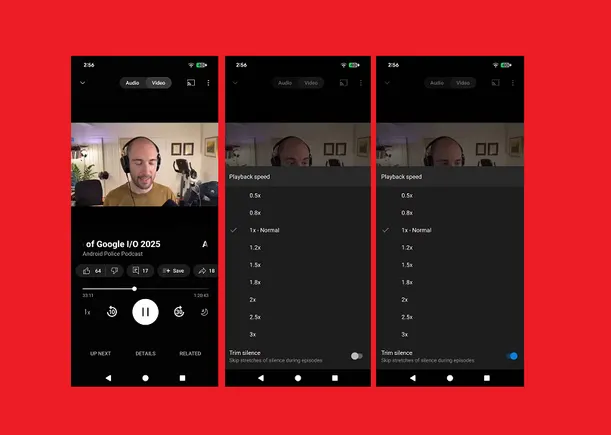Twitter Analytics: 11 Metrics to Track for Ultimate Boost in Social Media Growth
With any form of marketing, being able to measure the effectiveness and overall performance can help brands improve existing marketing strategies. If you are using Twitter as one of your marketing platforms, the best way to track and monitor...

With any form of marketing, being able to measure the effectiveness and overall performance can help brands improve existing marketing strategies.
If you are using Twitter as one of your marketing platforms, the best way to track and monitor your performance is by using Twitter Analytics.
Twitter Analytics provides marketers and brands with insightful user data.
This can include the number of followers gained or lost, impressions and engagement as well as other forms of online activity related to the account and tweets.
While it is predominantly used on business accounts, the tool is available to personal Twitter accounts as well. This is a useful tool that should be on your social media tools list.
The Benefits of Tracking Twitter Analytics
As mentioned above, analytics are used to provide meaningful insight into your Twitter account’s online activity.
This gives you the ability to make decisions based on data and factual information. The data at your disposal can be used to optimize your strategy and achieve better, more fruitful results.
For example, you can see what your audience wants and what they respond to, as well as what they do not like and what should be avoided. You can also track your account’s growth and performance and identify trends.
One of these trends can be the best time of day to post and at what frequency. Spoiler alert, the best time to post on Twitter is 8 am on Mondays and Thursdays. This can of course change based on your audience and their preferences.
4 Ways To Monitor Your Twitter Analytics
1. Twitter Analytics
This page will give you a quick overview of what has been happening on your account. It can show you your top tweet, top mention, top follower, and even top media-related posts.
In addition to this, it will provide a quick recap of everything that happened that month.
2. Tweets
This page will show you everything you need to know about your tweets. For example, which tweet had the highest impressions, what your engagement rate is, and view the performance of your promoted tweets.
3. Video
If you have posted video content, you will be able to use the video page to see how many people viewed it, how many people watched the full video, and how long people watched before moving on. This will help you determine if videos are worth your while or not.
4. Conversion tracking
If you have set up Twitter conversion tracking on your site, you will be able to view the conversion data from ongoing Twitter Ads. You can even export this data as a CSV file to include in your monthly reports.
All of these tools can be found on your profile page or by clicking on the “more” button, followed by the option that you are choosing to view.
11 Metrics You Should Be Tracking on Twitter
1. Impressions
This is how many people saw your tweet and indicate if people find your content appealing or not. Factors such as time of day and hashtag usage will impact the number of impressions.
2. Engagement
This is the number of people that have interacted with your tweet. This includes likes, retweets, link clicks, hashtag clicks, clicking to view the full tweet, replies, and follows.
Essentially anything that can happen on Twitter would fall under this category.
3. Engagement rate
This is the combination of your engagement and impressions and gives you a better idea of the overall performance of the content.
4. Top Tweet
As the name implies, this is the most popular tweet on your account for that month – or specific date range. This shows you what your audience responds to and what you should be doing more of in terms of content.
5. Followers
This shows you how many followers you have, as well as how many you gained or lost during that period. This is the most obvious way to track your page’s growth.

6. Top Followers
These are the most influential people following your page – they have the most followers.
This shows you who you’re connected to and whether they are of public interest or not. One retweet from them could work wonders for your brand.
7. New Followers
These are the newest additions to your page following and to help build a relationship with them, it’s worth reaching out to them to start a conversation.
8. Top Mention
This is the tweet that mentions your name and receives the most engagement. This shows you which customer is talking about you most, and have the most impact.
9. Likes
The virtual high 5 and acknowledgment of what you have said. It’s easy enough to like a tweet and indicates that someone has taken the time to read it.
10. Link Clicks
This is the number of people that have clicked on a link that has been included in a post during a specific period. This indicates how much interest there is in your product or service.
11. Retweets and Replies
A retweet is when someone reshares your content while a reply is a direct response to your tweet.
Both of these indicate interest in what is being communicated. Both of these also result in your tweet being shared on an additional feed, which increases your exposure.
This is a great way to build relationships with your audience.
The Benefits of Tracking Metrics
The purpose of Twitter Analytics and the ability to track the various metrics available is to track your growth. It also shows you what content is working, what isn’t and how it can be improved.
All of this information can be used to rethink your marketing efforts in an attempt to increase your reach.
As you can see by the metrics listed above, there are many ways to track your account’s performance, you simply need to know what you are looking to do and track it accordingly.
How Do You Measure Success?
The point of every marketing activation and campaign is to deliver successful results.
This means that there needs to be a framework or system in place to track the progress as well as the performance. Twitter Analytics is one such way to do so.
By knowing what you’re working towards and how to measure it, you can manage the process to ensure that you receive the best possible results.

 ValVades
ValVades 









_1.png)





















